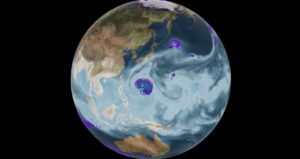
In a 2009 New York Times opinion piece, Cornell University mathematician Steven Strogatz claimed that partial differential equations are “the most powerful tool humanity has ever created.”
Anima Anandkumar, director of machine learning research at NVIDIA and professor of computing at the California Institute of Technology, delivered this quote at the GTC talk AI4Science: The Convergence of AI and Scientific Computing last week.
The foundation for most scientific simulations, according to Anandkumar, is partial differential equations. She also demonstrated how AI is enhancing the power of this historically important tool.
“The coming together of AI and scientific computing is going to be a revolution,” she said.
AI can help us model weather forecasting 100,000x faster than traditional models — and carbon dioxide sequestration 60,000x faster.
Calculations Speeding Up
Anandkumar and her colleagues created the Fourier Neural Operator (FNO), a framework that allows AI to learn and solve a whole family of partial differential equations rather than just one.
It’s the first machine learning method to model turbulent flows with zero-shot super-resolution, which means FNOs allow AI to make high-resolution inferences without the need for high-resolution training data, which is required by traditional neural networks.
When compared to traditional methods, FNO-based machine learning significantly lowers the costs of obtaining data for AI models, improves their accuracy, and speeds up inference.
Reducing Climate Change
Innumerable ways can FNOs be used to make a real-world difference.
They provide a 100,000x speedup over numerical methods and unprecedented fine-scale resolution for weather prediction models. The AI models can allow planning to mitigate the effects of extreme weather disasters by accurately simulating and predicting them.
Hurricane Matthew’s path and magnitude were accurately predicted by the FNO model in 2016.
The hurricane’s observed track is depicted in the video below. Hurricane forecasts based on traditional models are shown in white cones by the National Oceanic and Atmospheric Administration. The FNO-based AI forecasts are marked by purple contours.
The FNO model, as shown, follows the hurricane’s path with greater accuracy than the traditional method, and the high-resolution simulation of this weather event took only a quarter of a second to run on NVIDIA GPUs.
Anandkumar’s talk also covered how FNO-based AI can be used to model carbon dioxide sequestration, which is the process of capturing carbon dioxide from the atmosphere and storing it underground, which scientists say can help mitigate climate change.
FNOs allow researchers to model and investigate how carbon dioxide interacts with materials underground 60,000 times faster than traditional methods.
The FNO model, according to Anandkumar, is an essential step toward creating a digital twin of Earth.
Researchers and developers can use the new NVIDIA Modulus framework for training physics-informed machine learning models, as well as the NVIDIA Quantum-2 InfiniBand networking platform, to combine the powers of AI, physics, and supercomputing to help solve the world’s most difficult problems.
